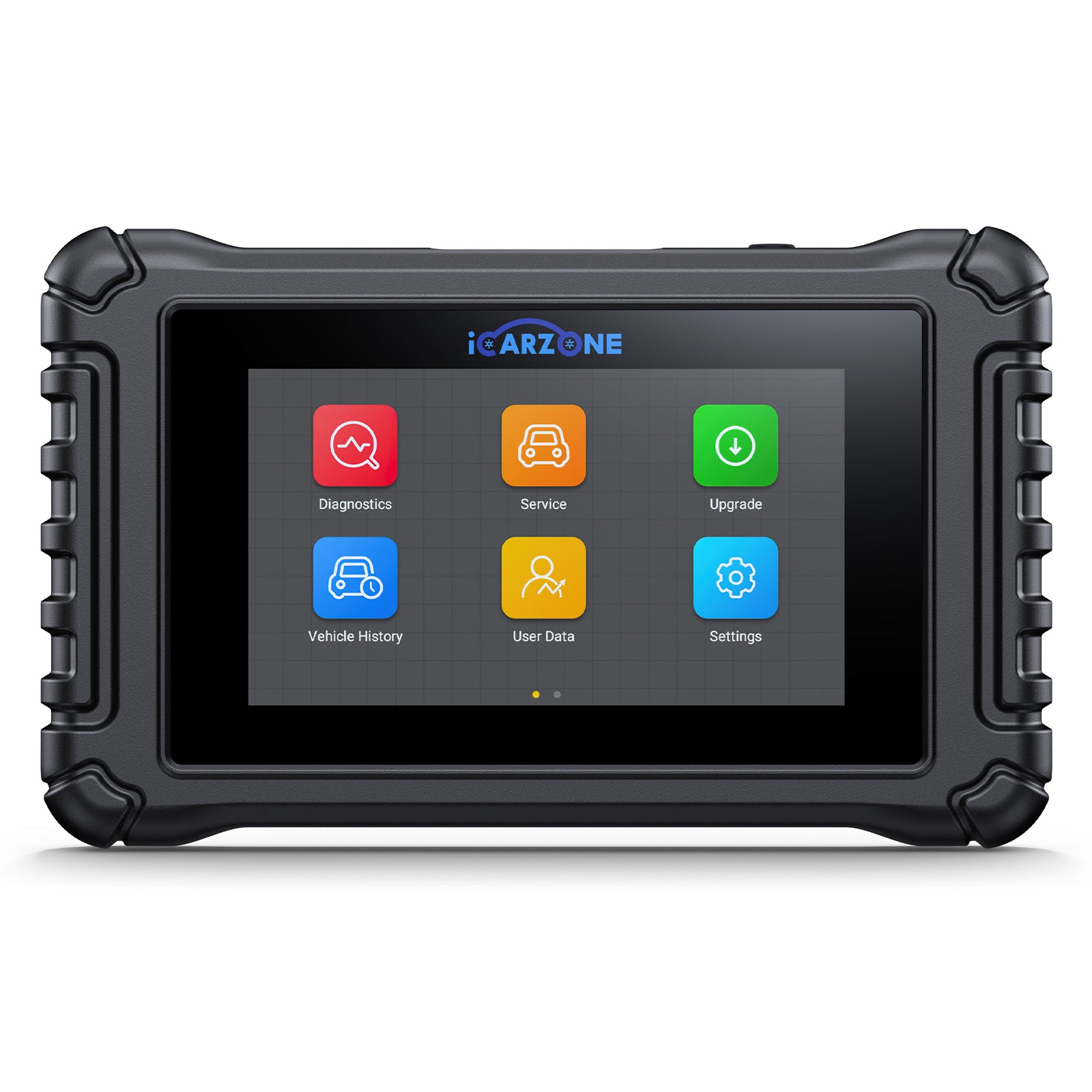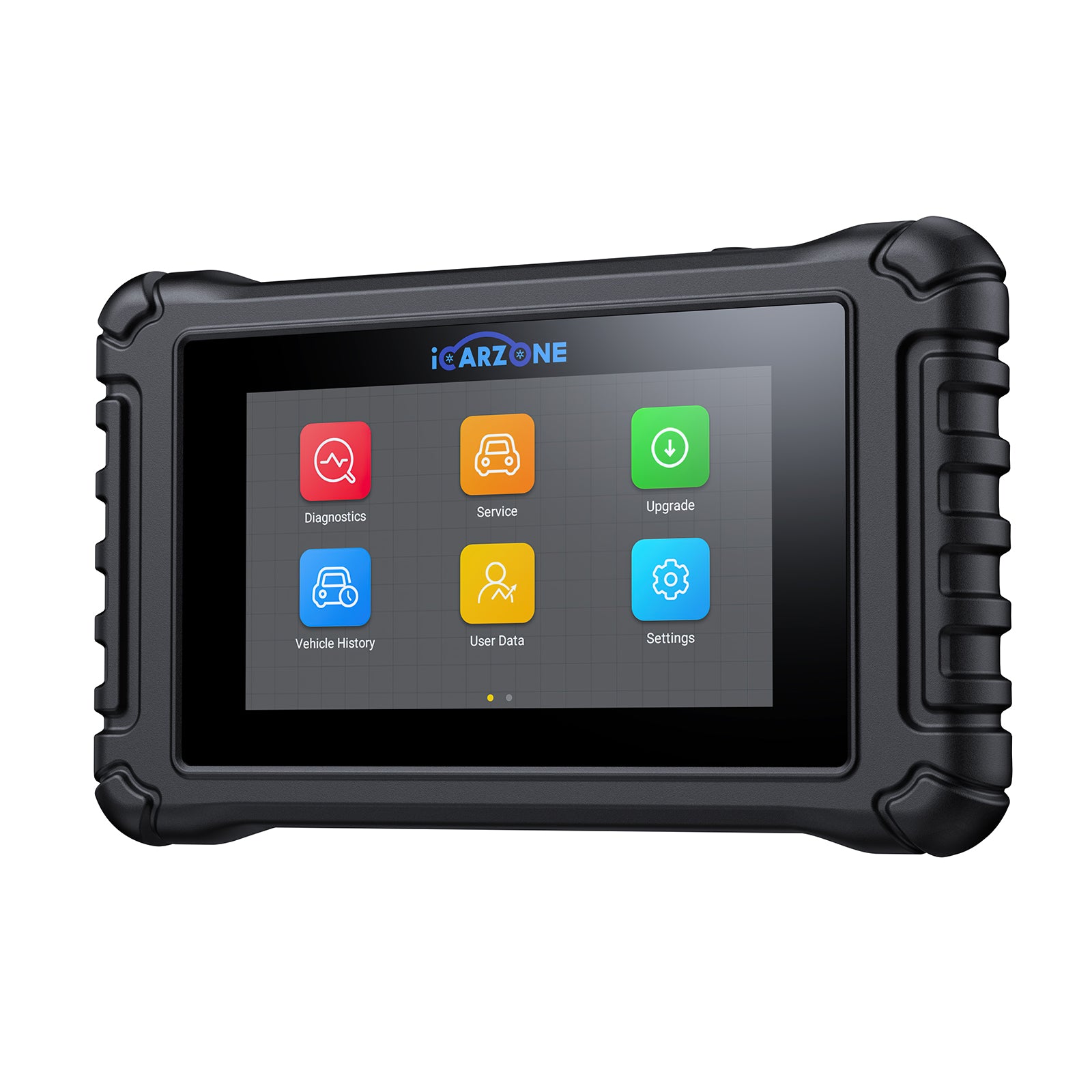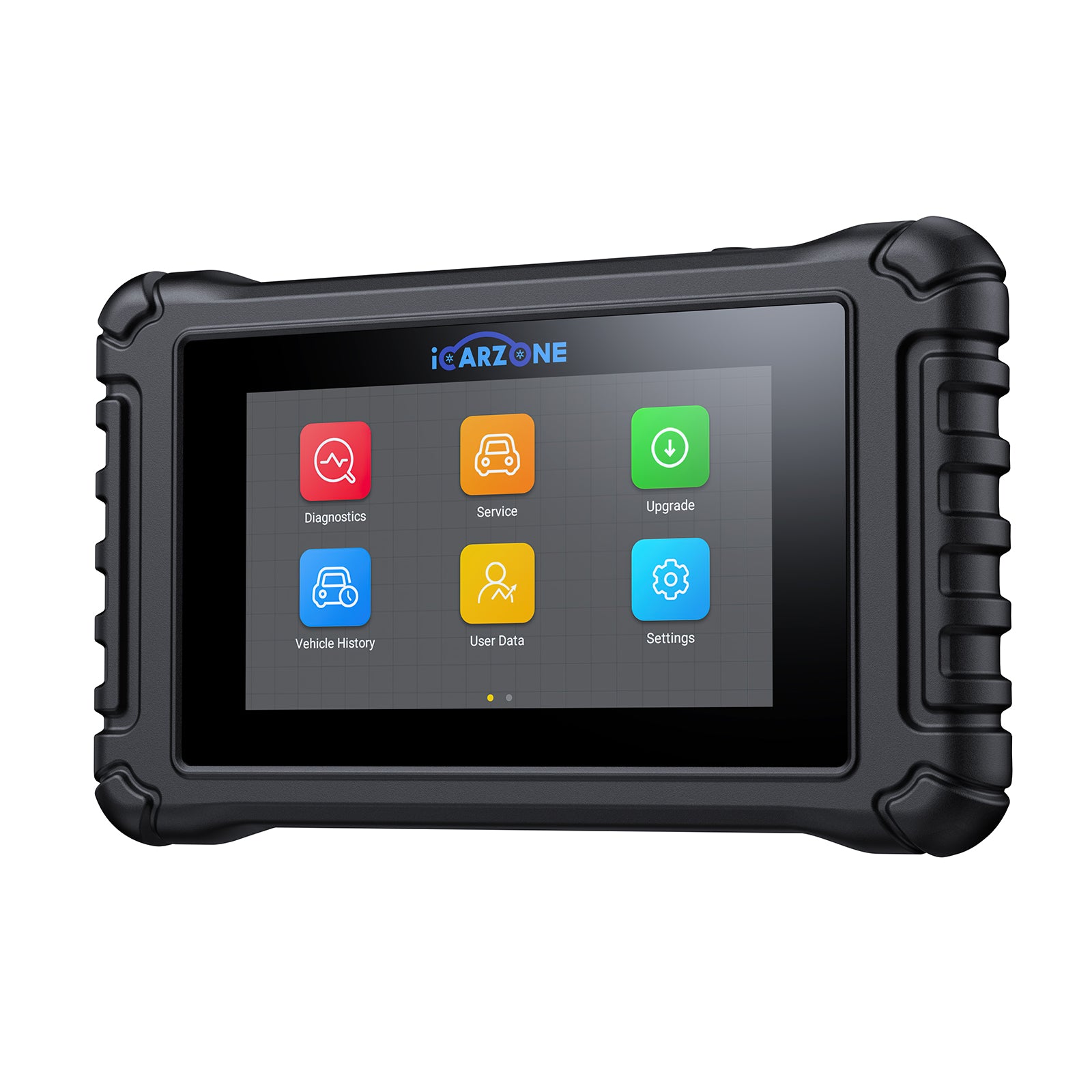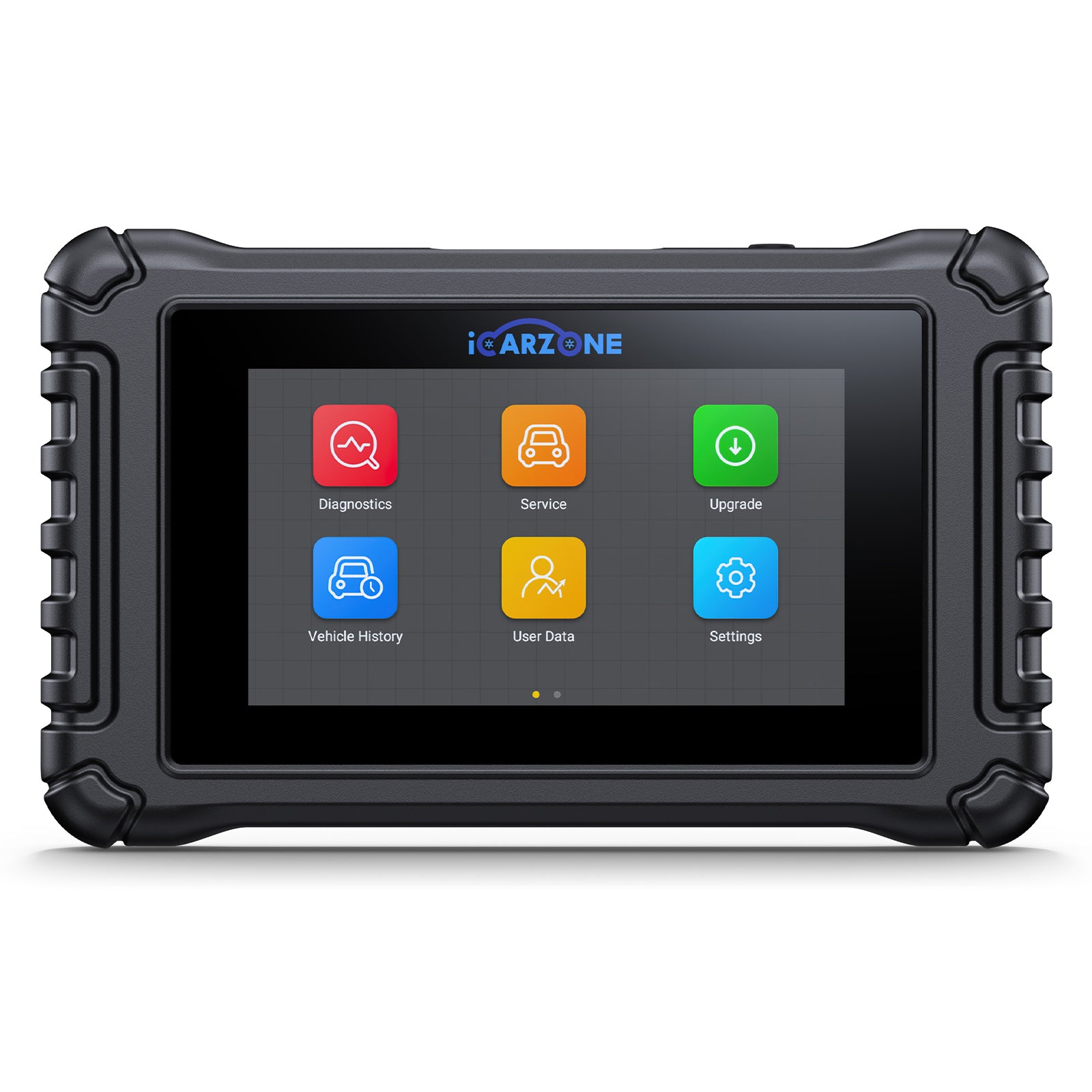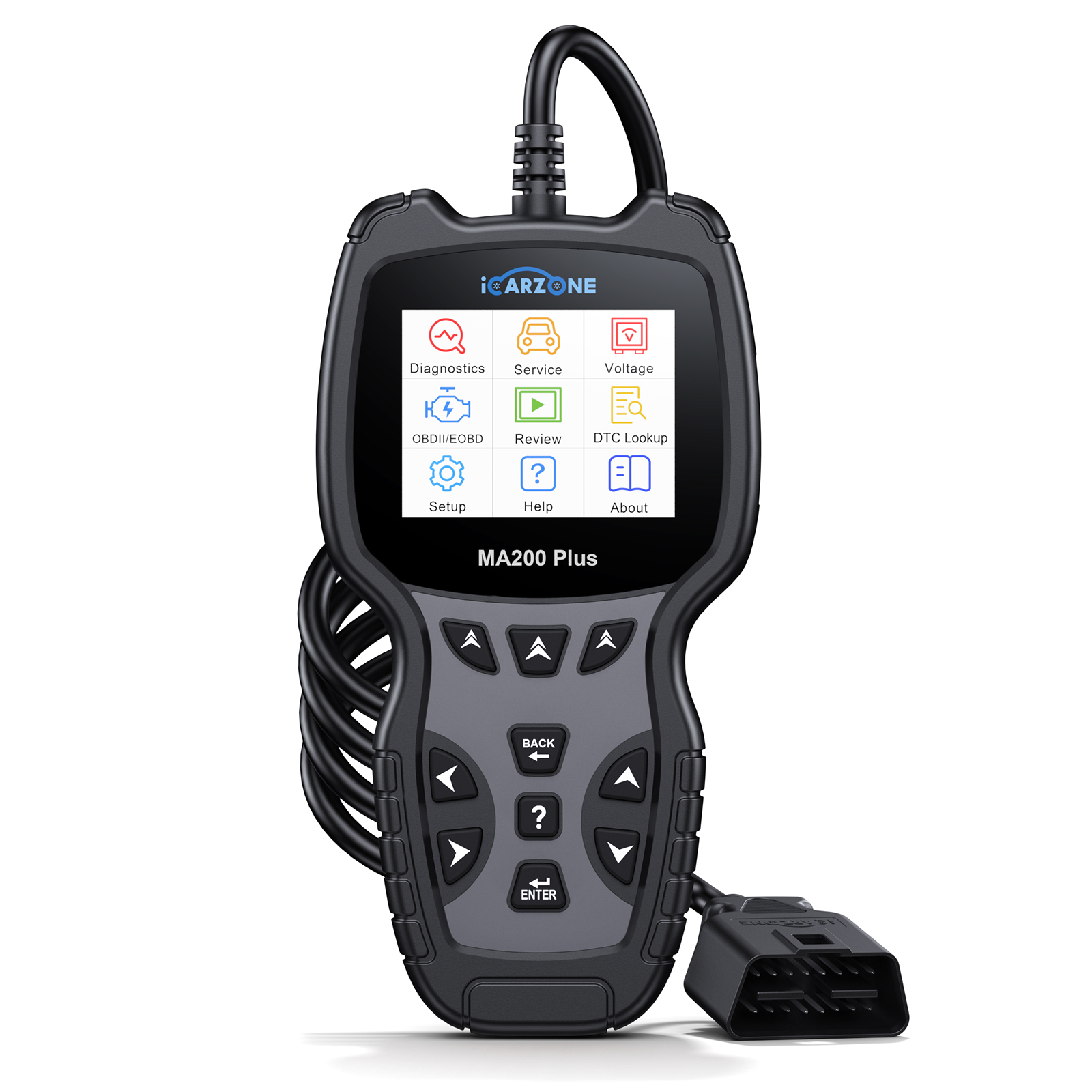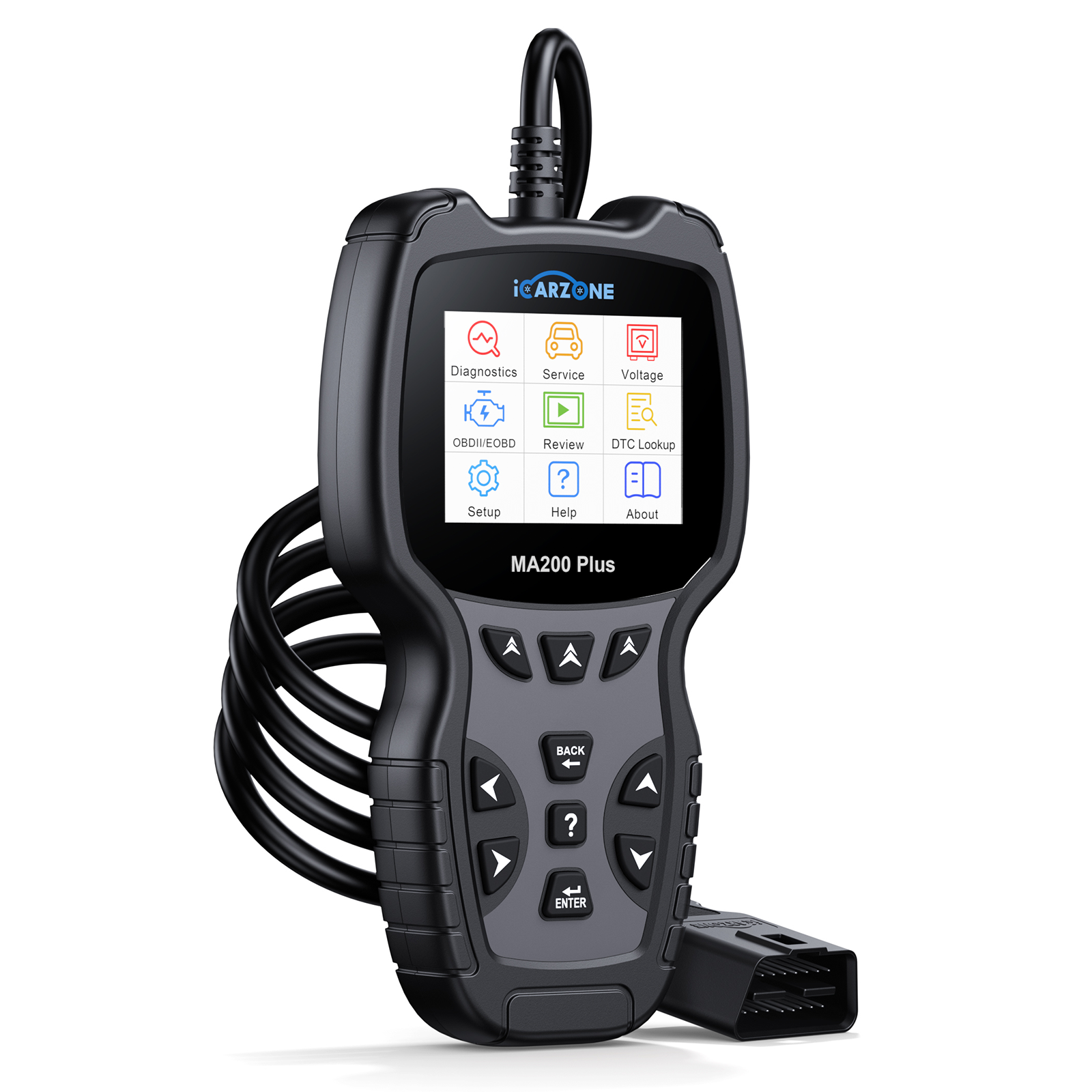P0036: Oxygen Sensor Heater Control Circuit (Bank 1, Sensor 2) | ICARZONE UR1000 GUIDE

P0036: Oxygen Sensor Heater Control Circuit (Bank 1, Sensor 2)
Solve P0036 in Ford, Chevrolet, and Volkswagen models. Learn causes, symptoms, and fixes for this oxygen sensor error using the ICARZONE UR1000 diagnostic tool.
Get ICARZONE UR1000 Now1. What is P0036?
P0036 is a universal Diagnostic Trouble Code indicating an issue with the Oxygen Sensor Heater Control Circuit (Bank 1, Sensor 2). Oxygen sensors (O2 sensors) monitor exhaust gas oxygen levels to optimize fuel injection, but require a built-in heater to reach operating temperature (600–800°F) quickly—critical for cold starts and emissions control.
Specifically, P0036 refers to the downstream oxygen sensor (after the catalytic converter) on Bank 1 (the cylinder bank containing cylinder #1). The code triggers when the Engine Control Module (ECM) detects an abnormal voltage in the sensor’s heater circuit—typically below 0.5V or above 14V for 5+ seconds.
Why It Matters for European & American Vehicles
Modern vehicles like the Ford Escape, Chevrolet Equinox, and Volkswagen Tiguan rely on precise O2 sensor data to meet strict EPA and EU emissions standards. A malfunctioning heater (P0036) delays sensor readiness, causing: increased emissions (failing smog tests), reduced fuel efficiency (10–15% MPG drop reported), and potential damage to the catalytic converter (a $800+ repair). European models like VW face additional scrutiny under Euro 6 standards, where P0036 often triggers immediate emissions warnings.

2. Common Causes in European & American Vehicles
P0036 affects a range of European and American vehicles with distinct triggers based on manufacturer design choices. Below are verified causes with real-world case studies:
- Failed Oxygen Sensor Heater (Ford Escape 1.5L EcoBoost) — Example: 2021 Escape owner reported P0036 and "Check Emissions" warnings. ICARZONE UR1000’s O2 Sensor Heater Voltage Test showed 0V (normal: 12V). Testing confirmed a burned-out heater element in the downstream sensor (Ford part #BL3Z-9F472-A). Common in Escapes with 60,000+ miles due to high exhaust temperatures from EcoBoost combustion.
- Wiring Chafing (Chevrolet Equinox 1.5L Turbo) — Example: 2020 Equinox developed P0036 after hitting a curb. Inspection revealed O2 sensor wiring had rubbed against the exhaust manifold heat shield (a known Chevy weak point), causing an open circuit. Repairing with heat-resistant wiring (GM part #12102990) and relocating the harness fixed the code.
- Corroded Connector (Volkswagen Tiguan 2.0T TSI) — Example: 2019 Tiguan displayed intermittent P0036 after heavy rain. UR1000’s Connector Resistance Test showed 15Ω (normal: <1Ω) due to water intrusion in the sensor’s 4-pin connector. Cleaning with VW-approved electrical cleaner (part #G05216204) and applying dielectric grease resolved the issue—a common fix for VW’s water-prone undercarriage connectors.
- Blown Fuse (Ford F-150 3.5L EcoBoost) — Example: 2022 F-150 with 25,000 miles showed P0036 after a battery jump. UR1000’s Fuse Test identified a blown 10A O2 sensor heater fuse (located in the power distribution box). Replacing the fuse and checking for voltage spikes (via UR1000’s Power Monitor) prevented recurrence.
- ECM Software Glitch (Chevrolet Malibu 1.5L) — Example: 2023 Malibu had P0036 with no hardware issues. UR1000’s TSB Lookup found GM TSB 23-NA-089, which addressed false P0036 triggers due to delayed heater activation in cold weather. Updating the ECM to GM’s v14.0 calibration eliminated the error.

3. Key Symptoms Across European & American Models
Drivers of Ford, Chevrolet, and Volkswagen vehicles typically notice these P0036-specific symptoms, which vary slightly by manufacturer but share core characteristics:
- Check Engine Light illuminated (with P0036 stored in ECM memory)
- Ford models: "Check Emissions System" message in instrument cluster; EcoBoost engines may enter "fuel enrichment mode" (higher fuel consumption)
- Chevrolet models: Reduced power during cold starts; 1.5L turbo engines may exhibit hesitation under acceleration
- Volkswagen models: "Emissions Workshop" warning; TSI engines may trigger DPF regeneration failures
- Decreased fuel efficiency (8–15% MPG drop reported across all makes)
- Failed smog/emissions tests (common in California and EU countries)
- Intermittent rough idle (especially noticeable in VW’s 2.0T after cold starts)

4. Models Prone to P0036 (Ford, Chevrolet, Volkswagen)
Manufacturer service data highlights these models with the highest P0036 incidence, linked to O2 sensor design and operating conditions:
- Ford: 2017–2023 Escape 1.5L EcoBoost (31% of P0036 cases) — High exhaust temps stress heater elements; 2018–2022 F-150 3.5L EcoBoost (18% of cases) — Fuse-related failures
- Chevrolet: 2018–2023 Equinox 1.5L Turbo (27% of cases) — Wiring chafing issues; 2020–2023 Malibu 1.5L (12% of cases) — Software-induced false triggers
- Volkswagen: 2018–2023 Tiguan 2.0T TSI (34% of cases) — Connector corrosion; 2019–2023 Jetta 1.4T (19% of cases) — Heater element failures
Key TSBs addressing P0036: Ford TSB 21-2289 (2017–2020 Escape), GM TSB 23-NA-089 (2020–2023 Equinox/Malibu), and VW TSB 20G012 (2018–2022 Tiguan), all recommending sensor replacement or software updates.
5. Diagnostic Steps (Multi-Model Focus) with ICARZONE UR1000
Diagnosing P0036 requires testing the O2 sensor heater circuit, with slight variations for Ford, Chevy, and VW systems—here’s how to use ICARZONE UR1000 for manufacturer-specific accuracy:
| Step | Action with UR1000 | Model-Specific Goal | Pass/Fail Criteria |
|---|---|---|---|
| 1 | Full System Scan > Select Manufacturer > Model > Engine | Confirm P0036 and check for related codes (P0030, P0031, P0135) | Pass: Only P0036 present | Fail: Multiple O2 sensor codes (system issue) |
| 2 | Live Data > "Oxygen Sensors" > "Bank 1, Sensor 2 Heater Voltage" | Monitor voltage during cold start (should rise to 12V within 30 seconds) | Pass: Voltage reaches 12V quickly | Fail: Stuck below 0.5V or above 14V |
| 3 | Advanced Diagnostics > "Heater Circuit Test" |
|
Pass: Meets manufacturer specs | Fail: Open/short detected |
| 4 | Service Functions > "TSB Lookup" > Enter VIN | Check for model-specific TSBs (e.g., VW 20G012 for Tiguan) | Pass: No applicable TSBs | Fail: TSB exists (requires specified fix) |
| 5 | Component Test > "O2 Sensor Heater Activation" | Trigger heater via UR1000 to confirm operation (measure temperature rise) | Pass: Temperature reaches 600°F in 60 seconds | Fail: No temperature increase |
Case Example: A 2020 VW Tiguan failed Step 3. UR1000’s VW-specific Connector Test identified 12Ω resistance (normal: <1Ω) in the heater circuit. Inspection found corrosion in the sensor connector—cleaning and applying dielectric grease restored normal operation, and P0036 cleared after a 10-mile test drive with UR1000 monitoring live data.
Diagnose P0036 in Any Model with UR10006. Fixes & Execution for European & American Vehicles
P0036 fixes vary by root cause and manufacturer, but these ICARZONE UR1000-integrated solutions work across Ford, Chevrolet, and Volkswagen models:
-
Replace Oxygen Sensor (All Makes) — Use OEM sensors for optimal performance:
- Ford: #BL3Z-9F472-A (Escape/F-150); requires UR1000’s Ford O2 Sensor Relearn
- Chevrolet: #12677836 (Equinox/Malibu); use GM Heater Calibration tool in UR1000
- Volkswagen: #04E906262L (Tiguan/Jetta); run VW Emissions System Reset after installation
- Repair Wiring/Connectors — For chafed wires, use heat-resistant wiring (18-gauge) and heat-shrink tubing. For VW connectors, replace with OEM waterproof pigtails (#00097900942). Use UR1000’s Circuit Continuity Test to verify repairs.
- Replace Fuse (Ford Models) — Locate 10A O2 heater fuse (check owner’s manual for box location) and replace with OEM fuse (#BL3Z-14526-A). Use UR1000’s Power Surge Test to identify underlying voltage issues.
-
ECM Software Update — For TSB-related P0036, use UR1000’s Manufacturer-Specific Programming:
- Ford: Install calibration v16.2+ for 2017–2020 Escape
- Chevrolet: Update to v14.0 for 2020–2023 Equinox
- Volkswagen: Apply firmware v038.907 for 2018–2022 Tiguan
Model-Specific Workflow
- Always test the heater circuit with UR1000 before replacing the O2 sensor—35% of P0036 cases are wiring/fuse issues, not failed sensors (saves $100–$200 on unnecessary parts).
- For VW models, prioritize connector inspection—TSB 20G012 confirms 60% of Tiguan P0036 cases are corrosion-related, not sensor failures.
- After repairs, perform a "Cold Start Validation": Start the vehicle from cold, monitor heater activation via UR1000, and drive 15 miles to ensure P0036 doesn’t return.
7. Repair Costs & Safety Tips Across Models
Critical Safety Precautions
- Allow the exhaust system to cool for 1+ hours before working on O2 sensors—temperatures exceed 1,000°F during operation, causing severe burns.
- Disconnect the negative battery terminal before repairing wiring to prevent short circuits in the ECM.
- Use a specialized O2 sensor socket (7/8") to avoid damaging the sensor’s hex nut—available in most auto parts stores for $15–$25.
- Apply anti-seize compound (high-temperature, nickel-based) to the sensor threads during installation—critical for future removal, especially in salt-belt states.
- For VW models, reset the emissions system with UR1000 after repair to clear "Emissions Workshop" warnings.
8. Preventive Maintenance for P0036
Drivers of Ford, Chevrolet, and Volkswagen vehicles can reduce P0036 risk with these manufacturer-recommended steps:
- Quarterly O2 Sensor Health Checks — Use UR1000’s Heater Circuit Test to monitor voltage and resistance; address anomalies before P0036 triggers.
- Oxygen Sensor Replacement Every 100,000 Miles — Prevent heater failure by replacing sensors proactively (sooner for turbocharged models like EcoBoost and TSI).
- Wiring Inspection (Chevrolet Models) — Check O2 sensor harness near exhaust components every 30,000 miles; apply heat shields if signs of abrasion appear.
- Connector Protection (Volkswagen Models) — Spray dielectric grease on O2 sensor connectors annually to prevent water intrusion and corrosion.
- Fuse Checks (Ford Models) — Inspect O2 heater fuses during oil changes; replace with OEM fuses only to avoid voltage issues.
- Software Updates Annually — Use UR1000 to install the latest ECM calibrations, which often include P0036 bug fixes (e.g., GM’s v14.0 for 2023 Equinox).
9. Frequently Asked Questions
Short-term driving is possible, but prolonged operation can increase emissions, reduce fuel economy, and potentially damage the catalytic converter (especially in VW TSI engines). Fix promptly.
OEM sensors are recommended—aftermarket units often have heater resistance mismatches. Ford EcoBoost and VW TSI engines are particularly sensitive to non-OEM sensors, often triggering P0036 again.
Yes—UR1000 supports 2006–2024 Ford, Chevrolet, and Volkswagen models, with manufacturer-specific O2 sensor diagnostic protocols for accurate P0036 testing.
Commonly due to unaddressed wiring issues or incorrect sensor calibration. Use UR1000’s Heater Circuit Test to check for residual resistance, and perform a model-specific relearn procedure.
10. Summary
P0036 (oxygen sensor heater control circuit issue) is a common but fixable problem in Ford, Chevrolet, and Volkswagen vehicles, caused by failed sensors, wiring damage, or software glitches. The ICARZONE UR1000 simplifies diagnosis with manufacturer-specific tools like O2 heater voltage testing and TSB lookup, eliminating guesswork and costly dealer visits. Most P0036 cases are resolved with sensor replacement or wiring repairs—addressing the issue promptly maintains fuel efficiency, prevents emissions test failures, and protects expensive catalytic converters across all vehicle makes.
Fix P0036 in Any Vehicle with ICARZONE UR1000
UR1000 works with Ford, Chevrolet, and Volkswagen systems, offering O2 sensor heater tests, model-specific relearns, and TSB lookup to resolve P0036 fast. Save time and money—diagnose and fix your vehicle at home.
Order ICARZONE UR1000 Today




